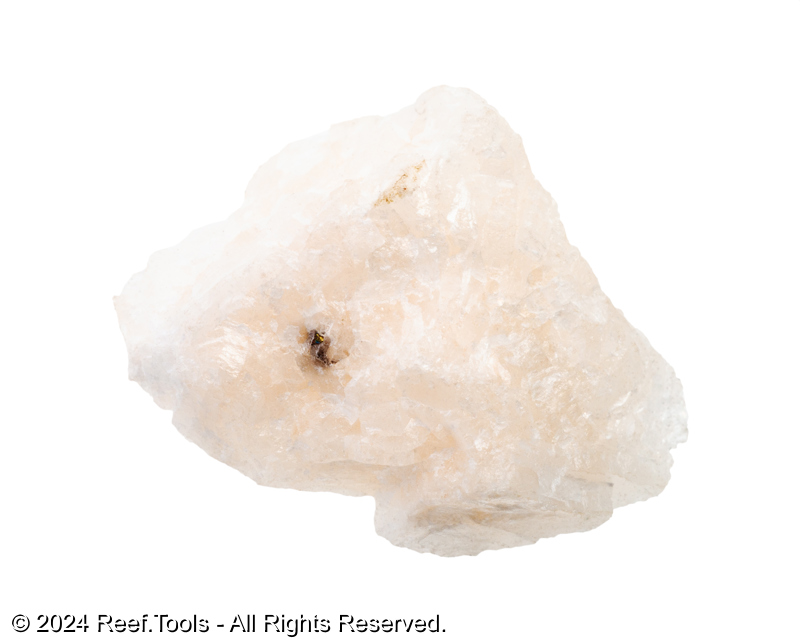
Barium (Ba)
Alkaline Earth Metals
Atomic Number: 56
Last Reviewed: 12/15/2024
Barium is a naturally occurring trace element in seawater, primarily found in its ionic form (Ba²⁺). It is considered a minor element with roles in coral calcification and trace element balance in reef ecosystems.
Barium is a trace element that exists in small concentrations in seawater and is absorbed by corals during calcification. While not a major component like calcium or magnesium, it contributes to the skeletal structure of corals and certain sponges by substituting for calcium ions under specific conditions. Its role in reef aquariums is primarily as a minor element rather than a critical nutrient.
Natural Seawater Levels
Natural seawater contains barium at levels ranging from 5 µg/L to 20 µg/L (micrograms per liter), depending on the region and proximity to terrestrial inputs. Higher concentrations are often observed near coastal areas due to riverine and sedimentary contributions.
Risks
Excess Barium: Elevated barium levels can lead to precipitation of barium sulfate (barite), which can clog aquarium equipment and reduce water clarity. Additionally, high barium levels have been associated with:
- Coral discoloration, particularly in SPS corals.
- Potential toxicity to marine invertebrates.
Deficiency: While deficiencies are rare in reef aquariums, insufficient barium might indicate poor trace element replenishment in systems heavily reliant on artificial salts.
Relevancy
Barium's relevance lies in its potential to:
- Substitute for Calcium in Coral Skeletons: Barium ions can replace calcium ions during coral calcification, though this is typically minimal and occurs under certain environmental conditions.
- Trace Element Balance: It acts as an indicator of natural seawater chemistry, providing clues about environmental conditions. Elevated levels can suggest contamination from industrial or terrestrial sources.
- Indicator for Silicate Use: In natural reefs, barium is often associated with silicate-utilizing organisms like diatoms due to its interaction with silica in marine systems.
While barium may not be biologically essential for coral health, it contributes to trace element dynamics in the reef.
Ocean Values
| Reference Name | Low | High | Optimal | Unit |
|---|---|---|---|---|
| Hawaii Ocean | 5.0000 | 15.0000 | 10.0000 | µg/L |
| Caribbean Ocean | 30.0000 | 70.0000 | 50.0000 | µg/L |
| Australia Ocean | 10.0000 | 20.0000 | 15.0000 | µg/L |
Regional Variations
Coastal areas typically have higher barium levels due to riverine and sedimentary inputs.
Open⁻ocean levels are more stable and lower in concentration.
Dosage Recommendations
Barium should only be dosed after confirming deficiencies through ICP testing.
Maintain levels within the NSW range of 5-20 µg/L.
Use supplements specifically designed for reef aquariums, and avoid overdosing.
Handling
Testing: Regular ICP testing ensures barium levels are within acceptable limits.
Control: Minimize sources of accidental barium introduction by using high-quality salt mixes and avoiding barium-leaching media.
Reef.Tools recommends: Maintain Barium (Ba) concentrations between 0.0050 and 0.0150 µg/L.
References
Tréguer, P. J., et al. "Reviews and syntheses: The biogeochemical cycle of silicon in the modern ocean." Biogeosciences, 2021. (bg.copernicus.org)
Mete, Ö. Z., et al. "Barium in seawater: dissolved distribution, relationship to silicon, and barite saturation state." Earth System Science Data, 2023.(essd.copernicus.org)
Holmes-Farley, R. "Chemistry and the Aquarium: Minor and Trace Elements." (reefs.com)
Difficulty
Rating: Easy
Managing barium levels is relatively straightforward, provided proper water sources and media are used.
Categorization
Type: Trace Element
Role: Minor Contributor to Coral Calcification
Not Usually Deficient
Most reef salts supply sufficient barium to meet the needs of corals and other marine organisms.
Not Essential
Barium is not biologically essential for coral health, though it plays a passive role in trace element chemistry and skeletal formation.
Aliases
Ba, Barite (when referring to its mineral form), Baryte